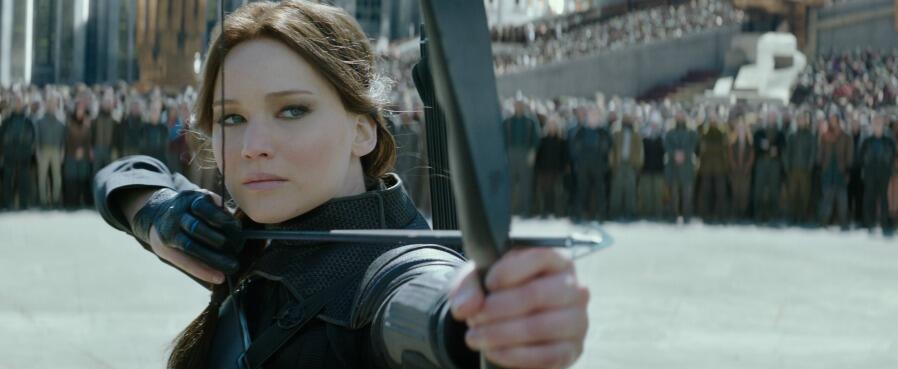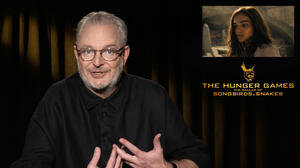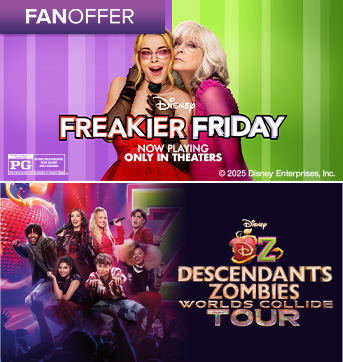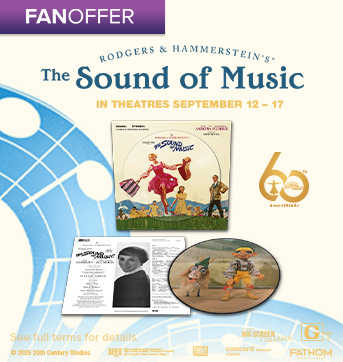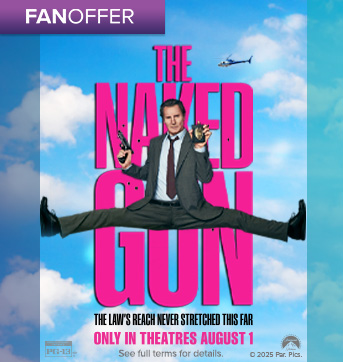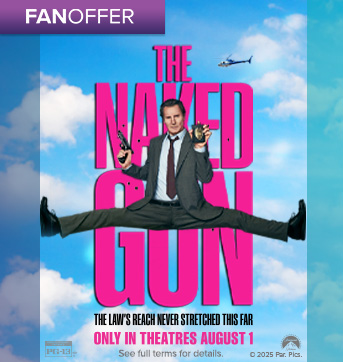
When Katniss Everdeen launches a final assault on the Capitol, you have to pull out the big guns. Jennifer Lawrence returns as the “Girl on Fire” for The Hunger Games: Mockingjay--Part 2 to infiltrate President Snow’s beloved city and finally put an end to his tyranny. As Sam Claflin’s Finnick jokes in the trailer, the mission turns into “the 76th annual Hunger Games” as the streets are filled with booby trap after booby trap.
The story gave director Francis Lawrence a whole new set of challenges. While most of the previous films were shot in Atlanta, production took them to Europe for the Capitol setting. While the past arenas afforded more open spaces for the cast, this film forced them into cramped corners.
Ahead of the theatrical premiere of Mockingjay--Part 2 on November 20, Lawrence broke down the most climactic scenes — one of which was the most challenging sequence he shot during his term as Hunger Games director.
Digging for Oil

The first major trap is one we see in the trailers: Katniss and her unit activate a booby-trapped “pod” that rapidly fills their enclosed space with treacherous oil.
The Location: Lawrence shot a lot of Mockingjay--Part 1 and Catching Fire in Atlanta. Because his team knew the area so well, they understood that they wouldn’t be able to find the locations they needed to depict the “scope and scale” and the “brutalist-meets-classical architecture” of the Capitol. So they did a search that led them to France.
The Fishbowl: The film set up shop in Paris for about five-to-six weeks, but production designer Philip Messina found an enclosed space within a collective of buildings about 10 kilometers east of the city. This would serve as the architectural “fishbowl” Lawrence wanted for the oil scene.

“Because it was enclosed, it seemed perfect for the oil,” he said, “since we needed to figure out a way that the oil could spill in and would fill something up and that could trap them. So instead of just being out in open streets where it would spill and maybe spread out and flatten out, this felt like, ‘Oh wow. It becomes sort of like a fishbowl.’”
Enhancing the Scene: While the location offered the canvas Lawrence needed, he had to paint in the details. The buildings' “battle-scarred” look were digitally augmented, as well as the pod guns and the bullet damage to the structures. Lawrence said a few smaller set pieces were constructed for added effect.
Swimming with the Sharks

In an attempt to escape the traps awaiting them on the surface, Katniss and company climbed down into the sewers where a new breed of dangers awaited them.
Camera Closing In: As the characters transferred from the open streets to the cramped sewers, the camera shots followed suit. “One of the ideas in the story is that they’re trying to avoid the cameras and Peacekeepers and people and the eyes of the Capitol,” Lawrence said. “The idea is them to go from wide-open spaces to more and more, you know, tighter and tighter, claustrophobic spaces that also get filled with water and are pitch black and you need to use the fire-tipped arrows to light your way.”

Building the Scene: According to Lawrence, “this was probably the most challenging sequence to shoot in the three movies that I did.” The crew built a maze of sewer tunnels on a soundstage in Atlanta and the entire sequence — beginning with the moment they first crawled in — took about three weeks to shoot.
“It’s a complex sequence with a lot of fighting, a lot of stunts so the actors all had their choreography,” he said. “Then you throw water in the mix, which always complicates things. But then we were in these cramped tunnels so everybody’s having to duck, and then there’s no light. The only lights are really from the lights of the gun and fire. To try and make it more comfortable, we would heat the water, so it became very humid. So it was very humid, and smoky, and sort of smelt like diesel because of the fire, and everybody’s wet and hunched down and in the dark.”
Creature Feature: Snow sends in a horde of mutts (aka mutations) into the sewers in the hopes of finishing off Katniss and the rebels. While WETA created the creatures’ final look through CG, stuntmen were present in the scene to give the cast something to act off. The creation process began with Lawrence, who enlisted Messina and illustrator Aaron Sims.
“I knew that I didn’t want them to just look like lizards, I wanted them to look sort of like tortured humanoids with lizardlike qualities,” Lawrence said. While he took their white coloring from the book (“because Snow loves white”), the trio came up with the idea for these monsters to be eyeless. Lawrence explained, “They exist down in the darkness of the sewers, so they sort of touch and smell their way around.”
In addition, the presence of the mutts further constricted the characters’ movement. Once they arrived, there’s “nowhere to go.”
The Final Shot

Without giving too much away — though book fans will know what we’re talking about — the final climactic moment in the film comes with a final shot from Katniss’ bow. It’s a moment that Jennifer said she’d been thinking about ever since she began filming the first movie.
Book-to-Movie Changes: While the book places this scene outside of Snow’s mansion, Lawrence brought it back to the Avenue of the Tributes. “The idea of seeing this environment where the tributes had all been sort of paraded for Snow’s amusement before to see him in a very different situation in the same environment was powerful,” Lawrence said.
The reinterpretation also provided the director with the scope and scale needed for the film’s ending and for the culmination of Panem’s struggle. “There was a lot of choreography that needed to be figured out to make the scene work as it’s written in the novel and that sort of dictated part of how it felt, like with the crowd folding in behind Katniss and following her down the Avenue and stopping a distance behind her.”

Building The Avenue: “I’m a big believer of, ‘If it’s supposed to look like it’s outside, you should shoot it outside,’” Lawrence said. His team created the giant Colosseum-esque set in a parking lot of an abandoned factory in Atlanta. Similarly, the Avenue scene in Catching Fire was shot in a parking lot outside of the Atlanta Motor Speedway.
The Vote: Even before he started filming Part 2, Lawrence had been thinking a lot about the voting scene from the book that precedes Katniss’ final shot. “To me a lot of the sort of complicating — you know, the tracking of characters, and what people are doing, and what people want, and reveals all sort of comes down to the vote,” he said. “I always knew it was going to be complicated, and I needed to track a lot for that, but I was very happy because I saw that it was gonna work on the day that we shot it.”
For Lawrence, this scene was connected to two previous moments — Katniss’ meeting with Snow in the greenhouse, and her interaction with Gale right afterwards. “It’s just making sure that all of those puzzle pieces are locking together appropriately.”
Now go check out a playlist of clips from the director's movies, right here.
